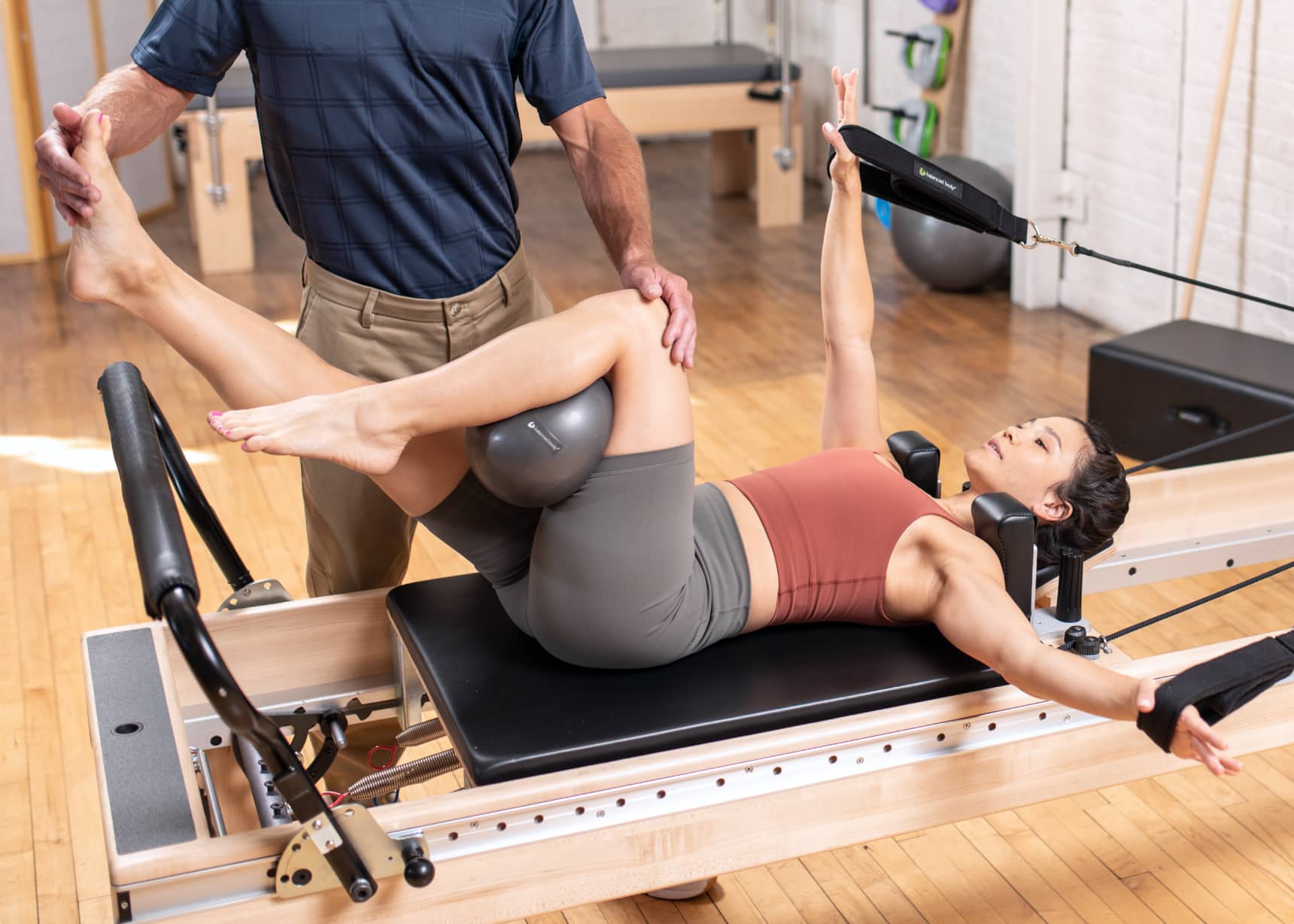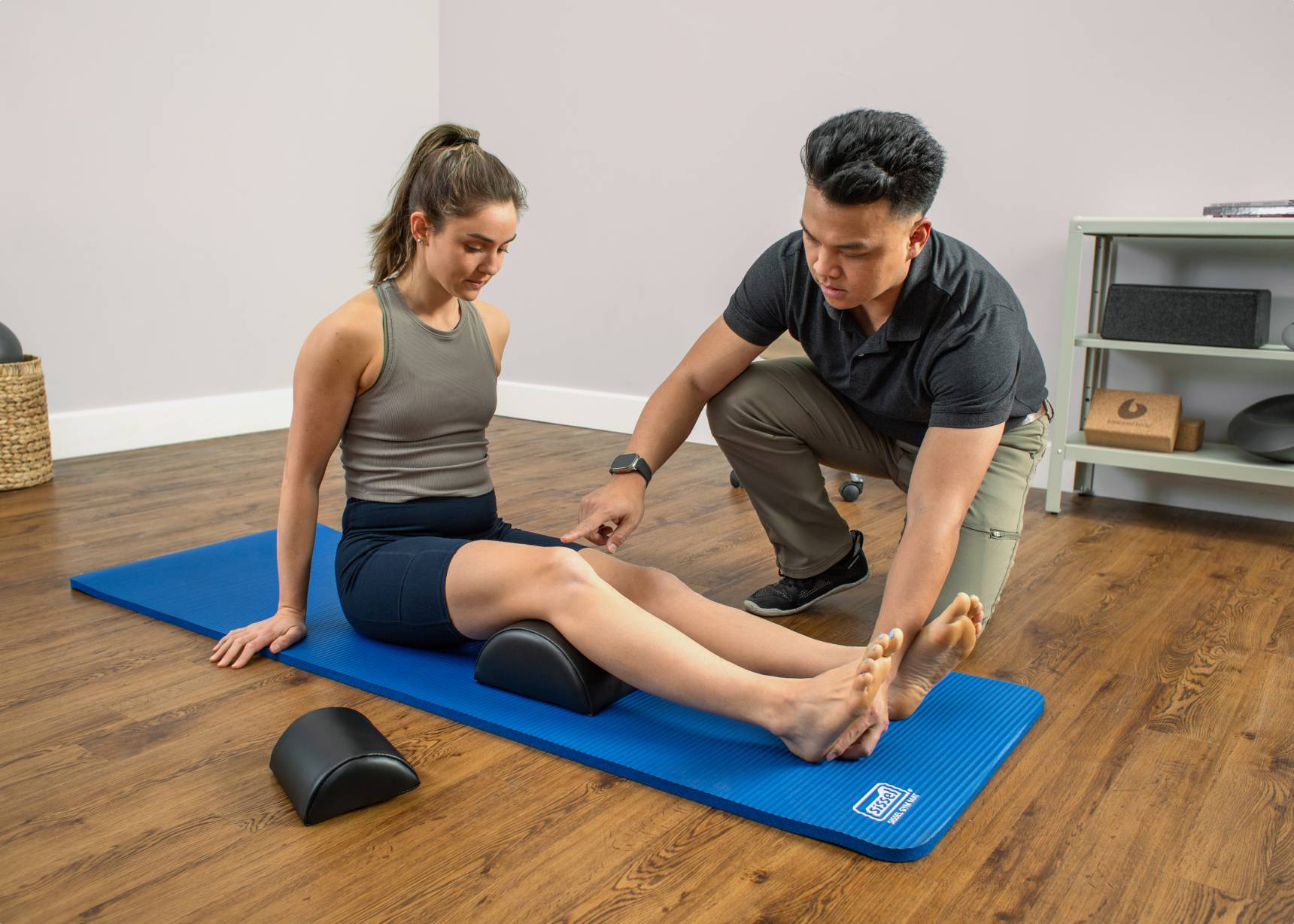Pilates: Effective For Injury Rehabilitation
Pilates: Effective For Injury Rehabilitation
by Ken Endelman
Founder and CEO of Balanced Body, Inc.
Most people all over North America are familiar with Pilates — it is still is one of the fastest growing exercises in the world. And millions more have experienced the physical fitness benefits of added strength, length, and agility that it provides.
But few know that Pilates is rapidly rising in another area — rehabilitation from injury.
Correcting Muscle Imbalance
Many injuries are caused by muscular imbalances within our bodies. And many things cause these imbalances — our posture, the way we walk, bend over, sit, lie down, or work out — basically the way we move. Most of us move incorrectly in some way or another, which puts too much pressure on some muscles and weakens others, causing an imbalance.
Take the back, for example: the way we move may put too much pressure on the spine, while weakening the pelvic muscles in the front of the body or vice-versa. Either scenario creates an imbalance, which means the body is much more perceptible to serious strains, pulls, tears or worse.
Pilates exercises promote an even musculature throughout the body by strengthening the core. The core is considered the “center” of the body and consists of the deep abdominal muscles along with the muscles closest to the spine. Pilates also stresses spinal and pelvic alignment, which is critical in getting us to move the way we’re supposed to move to avoid injury.

A Flexible Form of Rehab
These are big reasons why physical therapists all over the globe are now using Pilates as a form of rehabilitation. Kris Bosch, president of Northstar Pilates in Buffalo, NY, says Pilates is tremendously effective for other reasons, too.
Part of its success is indeed based on the approach to the principles of Pilates – core strength, an even musculature, etc. But another reason is that it provides a greater degree of flexibility than most conventional forms of physical therapy. This is true because Pilates exercises can be modified for each person and still be extremely effective. You can go from basic movements to very advanced, depending on how a patient needs to progress or how badly they are injured.
Conventional physical therapy, on the other hand, often involves patients being given a set of exercises that may be too hard for them to tolerate, says Bosch. It might be because they cause too much pain, or perhaps they are not aware of how to correctly position their body for maximum results — something that Pilates teaches you to do.
Positive Movement Experiences
In addition, injured clients become responsible for their own rehabilitation. It is not just coming to a therapist, lying down and having them do all the work. When Pilates is used for injury recovery, a patient learns where their body is in space and to identify the best movement sequence. All these factors contribute to a positive movement experience, which Bosch says greatly facilitates a recovery.
When you create a positive movement experience, you are able to take a step forward without pain. The more you move without pain, the more confidence you gain. And the more confidence you gain, the more likely you are to try another movement or exercise. That’s a very healthy rehabilitative cycle.
Most Pilates exercises are performed on a mat or piece of equipment called a Reformer (a sliding carriage inside a long frame connected to springs, ropes and pulleys). One of the nice things about Pilates, Bosch says, is the way you can combine the Reformer and mat together as a solid 1-2 approach:
It’s nice to get them on the Reformer first, because the springs on the Reformer assist the movements they attempt. This gets them out of bad or incorrect movement patterns they’ve developed which probably led to the injury in the first place. Then, as they progress and are no longer experiencing pain, they can use the mat for home exercises to continue their rehab, strengthen those muscles and prevent further injury.

Rehab vs. Conventional Exercise
If you have injured yourself and are considering Pilates, it’s important to make sure that your instructor has physical therapy experience. "There’s a big difference between teaching Pilates as a form of exercise and using it as form of therapy," says Bosch. "The principles of Pilates are awesome for rehabilitation, but if they aren’t used in conjunction with proper therapy techniques it could aggravate the injury. Before you start, make sure you ask your instructor if he or she has physical therapy training."
About the Author
Ken Endelman is Founder and CEO of Balanced Body Inc. Ken began his career as a designer and craftsman of fine custom furniture – a background apparent in every piece of hand-finished equipment the company makes. Since the early 1970s, Ken Endelman has updated Joseph Pilates’ equipment with state-of-the-art engineering, materials and technology, many of which have become industry standards. The company has been awarded twenty-four U.S. patents, with more pending. Balanced Body Inc. continues to actively promote Pilates to the fitness industry, the medical profession and the media.
This article originally appeared in Beyond Fitness Magazine.
